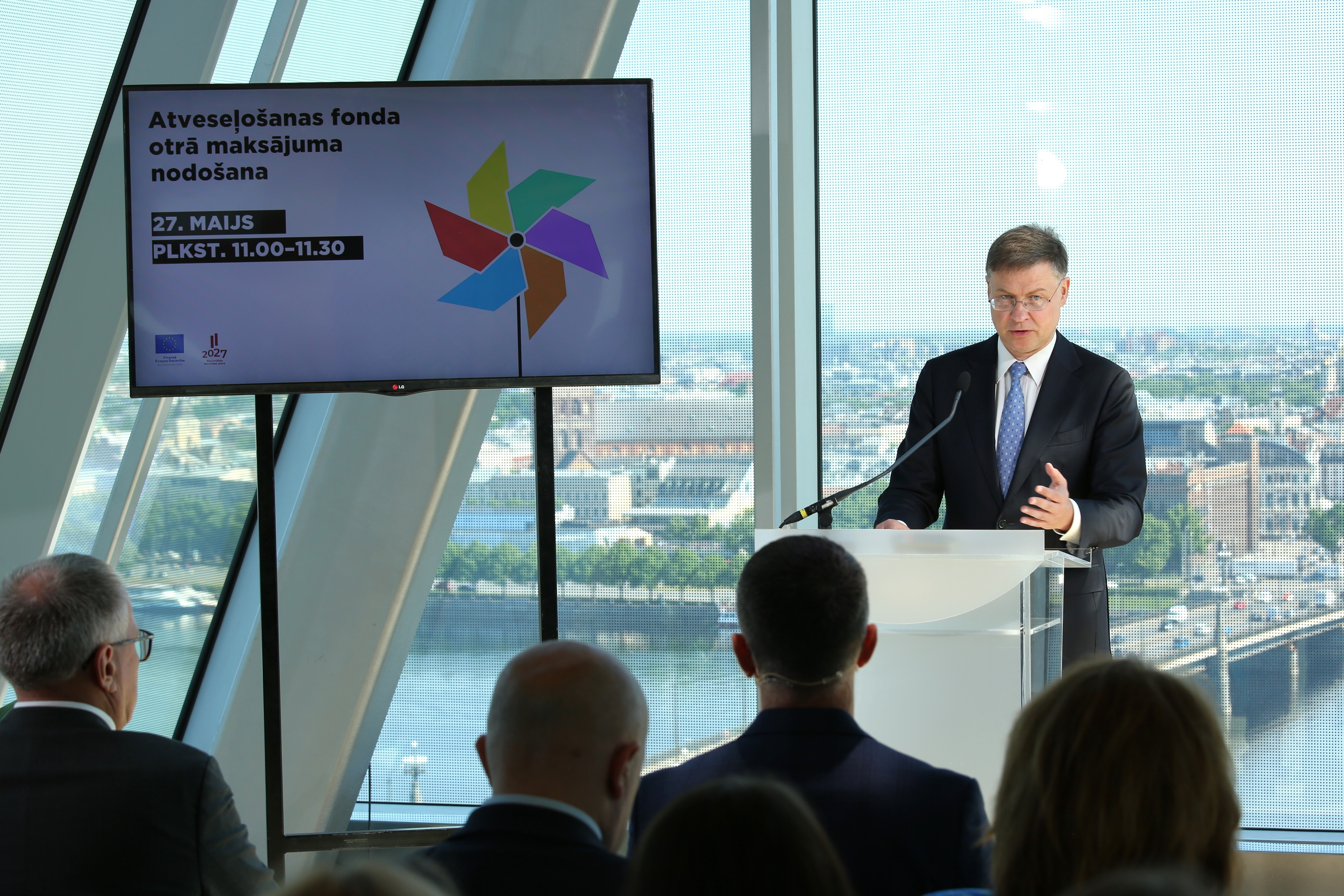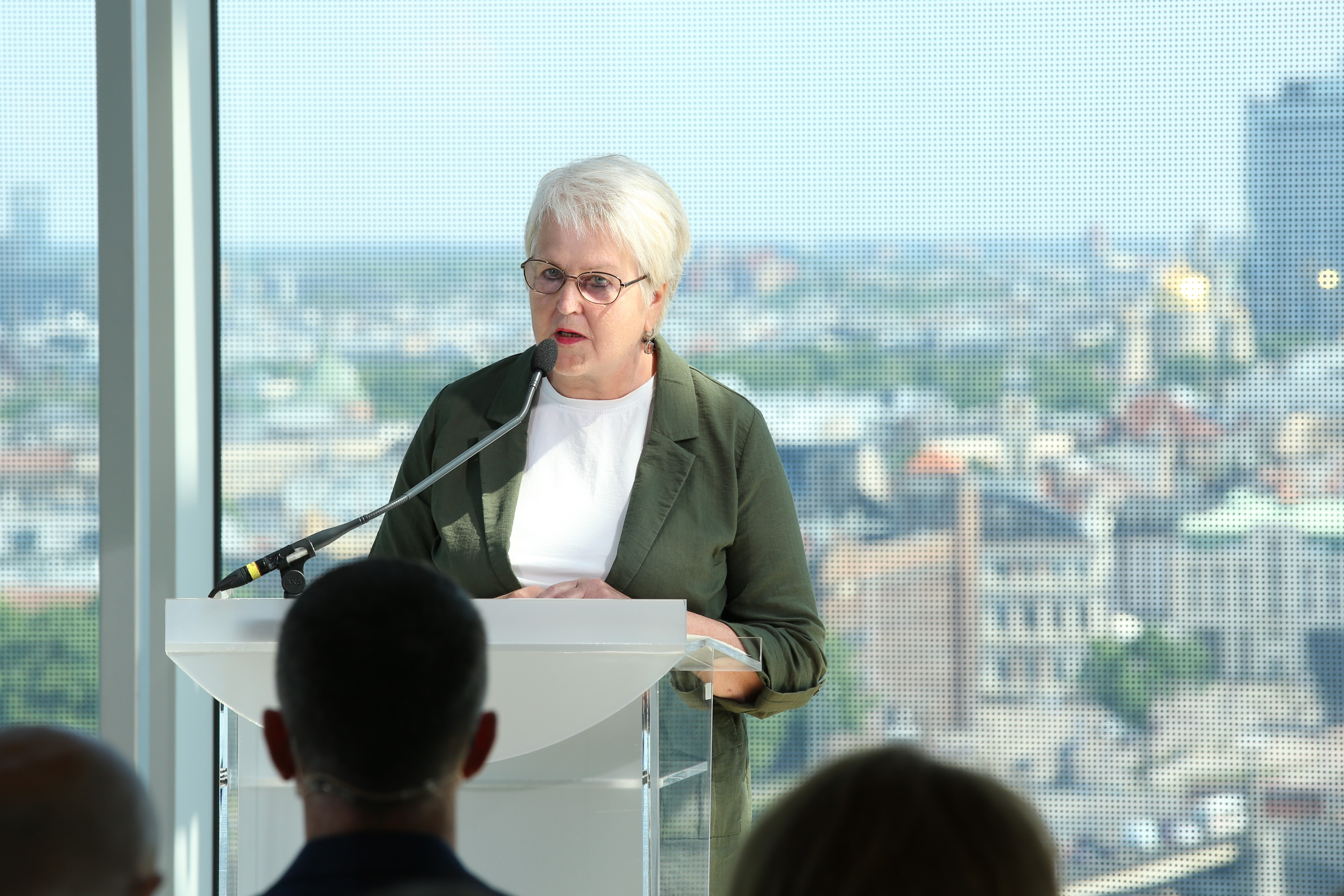On December 22, 2023, Latvia submitted to the European Commission (EC) the second payment request within the framework of the European Union (EU) Recovery and Resilience Facility for the fulfillment of 43 indicators. Latvia receives this payment for 336 million euros on Monday, May 27. Currently, a little more than half of the planned projects of the Recovery and Resilience Facility are already being implemented.
The first phase of the Recovery and Resilience Facility investing achieved all nine milestones and received a payment of 201 million euros. In the second phase, the implementation of ongoing projects and the launch of future projects continued, and for a large number of projects the benefits of the funding can already be measured, e.g. in the digitization of the justice system, the first phase of the E-Learning programme was successfully implemented and the public portal elieta.lv was created, in the climate area, the first electric bus has already been used for school transport in Saldus municipality, and in the energy efficiency in business sector, several entrepreneurs have successfully implemented energy efficiency measures and received capital rebates to repay their loan liabilities.
Valdis Dombrovskis, Executive Vice President of the EC: “I congratulate Latvia on receiving the second Recovery and Resilience Facility payment of 336 million euros and thank everyone who worked on the implementation of these investments and reforms. What has been achieved is a significant contribution to the modernization of the Latvian state administration and economy, energy efficiency, the development of the regions of our country, as well as the improvement of education, health and social protection of the population. For example, programmes for increasing energy efficiency have been approved for both residential buildings and companies; rebuilt and renovated 70 km of national and regional roads; the construction of almost 700 energy-efficient low-rent apartments is planned, and 10 Latvian hospitals will receive additional equipment and investments to ensure citizens better access to health services. Latvia's customs capacity has also been strengthened and a plan to curb the shadow economy has been approved. These are specific cases where EU funding helps the development of Latvia. In parallel with the financing of the Recovery Fund plan, Latvia must speed up the implementation of EU cohesion and structural funds, especially taking into account the fact that the Russian war in Ukraine has adversely affected the Latvian economy."
“Recovery and Resilience Facility funding support is especially important right now, when the economic growth is largely based on fund investments. We expect to receive 660 million euros this year and 820 million euros next year. It is important that these investments deliver not only short-term returns, but also long-term ones. For example, by developing a long-term national strategy for innovation management, ensuring cooperation between line ministries, research institutions and the business sector. This will allow private and public investment to be directed in a predictable and coherent way with a long-term vision towards areas where Latvia is strong and has great potential to innovate - biomedicine, medical technologies and pharmaceuticals, information and communication technologies, smart energy and mobility, and others. There is still work to be done with the European Commission to give greater flexibility in the implementation of plans that are essential for Recovery and Resilience Facility investments," expresses Arvils Ašeradens, Minister of Finance.
Several investments and reforms of the Recovery and Resilience Facility are already showing the first practical results. By May 2024, a total of 79 of the 229 milestones and targets set for Latvia had been met. Investment rules have been approved for 92% of the available Recovery and Resilience Facility funding, and project selections have been launched for 89% or 1.75 billion euros. Projects for 61% of the total funding, or 1 207.3 million euros, are already under implementation. In several areas of activity, entrepreneurs, municipalities and non-governmental organizations still have the opportunity to apply for their projects and implement them, thus strengthening the economic capacity and resilience of the country.
In the next stages of reforms and investments, it is planned to expand the housing stock in the regions by building up to 700 low-cost rental apartments, the improvement of national and regional highways will continue, nine disaster management and emergency response centers will be built, as well as the creation of industrial parks in each of the regions with the aim of developing business and create new jobs in the regions.
The Recovery and Resilience Facility (RRF) is a centrally managed budget programme of the European Commission (EC), created in addition to the multiannual budget of the European Union for the programming period 2021-2027. The programme aims to support reforms and investments linked to the transition to a green and digital economy and to mitigate the social and economic impact of the crisis. The Recovery Fund will invest 1.97 billion euros in Latvia's economy by the end of 2026, through reforms and investments in all six of the Recovery Fund's areas: Green transition (including RePowerEU), Digital transformation, Reducing Inequality, Economic Transformation, Health and Rule of Law.
Presentation (LV)












